There are three ways to get supplies from Lukla to other parts of the Himalaya, helicopter, beasts of burden (which will be another post) and…humans. They are called porters, often mistakenly called Sherpas. We were told a Sherpa, which is an ethnicity, would not stoop so low as to carry gear at these altitudes. Therefore, the job of porter lies on others in the region looking for a job. This definition, I believe, changes as one climbs beyond base camp and heads to the summit of the big mountains. This blog will cover the space between Lukla and Base Camp.
Let’s begin with footwear. We agonized over what boots to wear that would be comfortable for this trek. Once on the trail that was it, no calling on the phone and having REI send a new pair. So, do we take a spare pair of boots? Some did, I did not. It worked out. I was shocked at the footwear of the porters. Shocked.
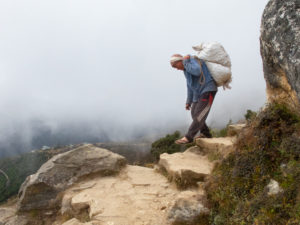 They wore flip-flops…
They wore flip-flops…
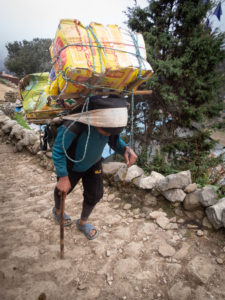 …slide in sandals…
…slide in sandals… 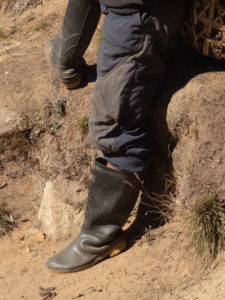 …and rubber boots.
…and rubber boots.
The loads they carried were remarkable. We were limited as to what we could bring, weight wise, for our porters. Each porter carried two of our bags. Our duffels contained clothes, toiletries and a sleeping bag for a 12-day trek. I think they each weighed 25-30 pounds which meant our porters were carrying 50-60 pounds PLUS their own gear. Which no doubt was FAR less than what we thought we needed to survive.
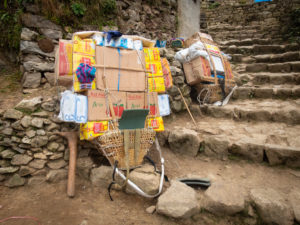 I have no idea what is in these boxes and packages but this looks like it must weigh FAR more than 60 pounds.
I have no idea what is in these boxes and packages but this looks like it must weigh FAR more than 60 pounds.
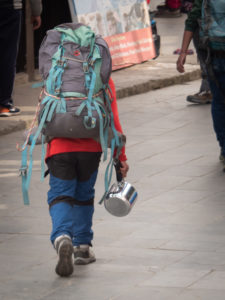 I found this interesting. See the belt strap on this backpack? It’s meant to distribute the weight of the pack to the hips thus alleviating strain on the shoulders, right? It’s not connected. The porters carry their weight with a strap across their heads. It didn’t matter if it was a backpack or traditional basket.
I found this interesting. See the belt strap on this backpack? It’s meant to distribute the weight of the pack to the hips thus alleviating strain on the shoulders, right? It’s not connected. The porters carry their weight with a strap across their heads. It didn’t matter if it was a backpack or traditional basket.
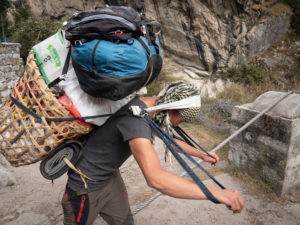 The straps he’s holding are used to balance the load.
The straps he’s holding are used to balance the load.
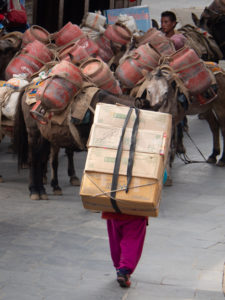 This guy is walking through Lukla and approaching a mule train loaded with propane tanks. I can’t help but wonder how far he’s going. The other amazing thing? We walked with daypacks full of water and extra clothing. The porters seemed to have nothing.
This guy is walking through Lukla and approaching a mule train loaded with propane tanks. I can’t help but wonder how far he’s going. The other amazing thing? We walked with daypacks full of water and extra clothing. The porters seemed to have nothing.
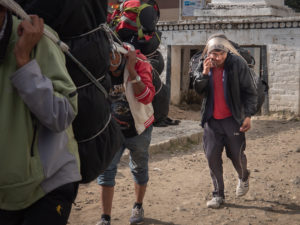
I think I’ve mentioned before that phones were common all along the trail.
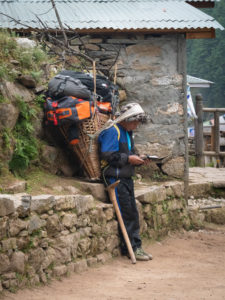 It seems this guy may have been setting up his next job.
It seems this guy may have been setting up his next job.
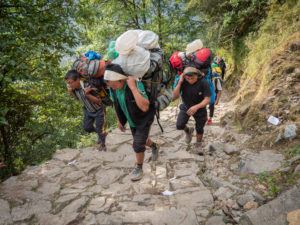 As with the animal pack trains, we always stepped out of the way and let the porters have a clear path with their loads.
As with the animal pack trains, we always stepped out of the way and let the porters have a clear path with their loads.
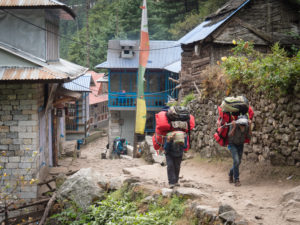 SUCH a common sight.
SUCH a common sight.
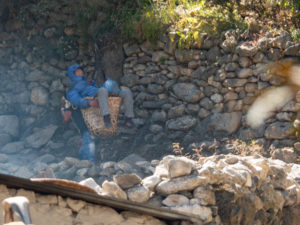 Not sure of the story here, maybe illness? injury? This porter was carrying a human!
Not sure of the story here, maybe illness? injury? This porter was carrying a human!
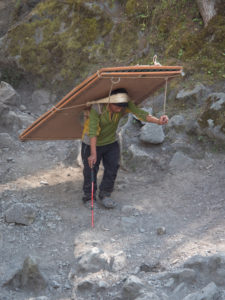 This was one of the more odd materials being transported up the trail.
This was one of the more odd materials being transported up the trail.
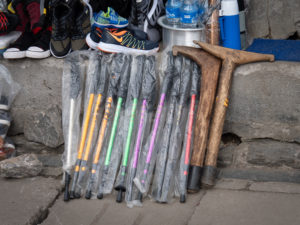
Hiking poles and…wooden crutches? I was curious about these items, most porters had them. Then I found this fellow:
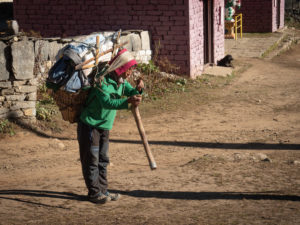
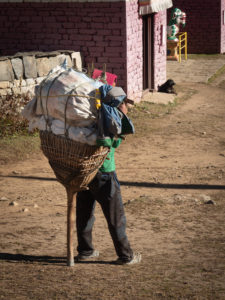 Genius! You can rest ANYWHERE!! All along the trail are low rock walls, largely built maybe for porters to rest their loads. But if there isn’t a wall there is the little wooden crutch!
Genius! You can rest ANYWHERE!! All along the trail are low rock walls, largely built maybe for porters to rest their loads. But if there isn’t a wall there is the little wooden crutch!
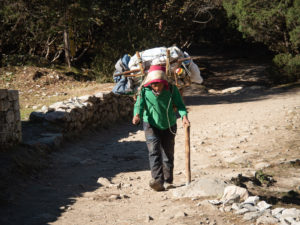 It can also be used as a walking stick.
It can also be used as a walking stick.
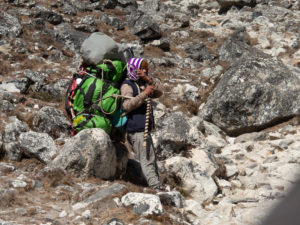 Resting on a rock. He has quite a load.
Resting on a rock. He has quite a load.
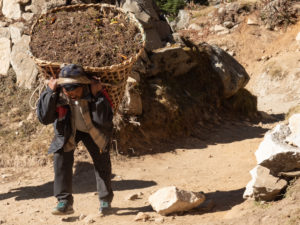 Hauling dirt? As we got higher there were many folks hauling yak dung for fuel as trees became extinct at higher elevations.
Hauling dirt? As we got higher there were many folks hauling yak dung for fuel as trees became extinct at higher elevations.
The last four images are a reminder of what their “office” looks like each day. I can only imagine the stress their bodies endure with these loads crushing down on their spines. It’s a necessary evil to live and thrive at these locations. Our impact on the land and these people is certainly something to think about.
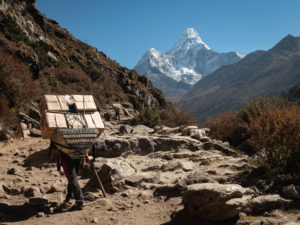
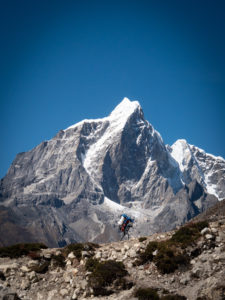
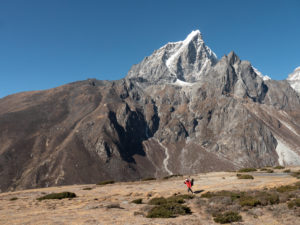
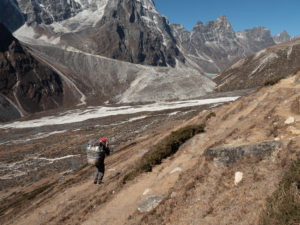
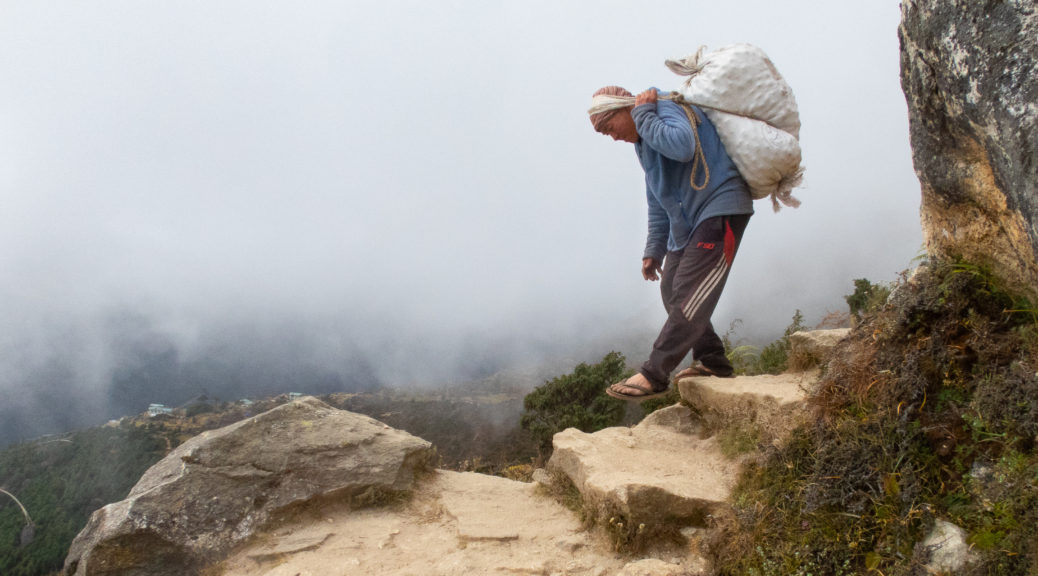
WOW! A very nice piece showcasing the human condition of the porters who are probably also very much overlooked. I particularly like the final four photos with the “office” in which they toil on a daily basis.
Thanx!!!
Wow! Fascinating! I loved the wooden “crutch” to rest their load periodically. I wish there were some way someone could trace every porter’s foot who doesn’t have proper hiking boots so those of us in the rich countries could send them boots and heavy socks.